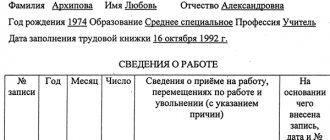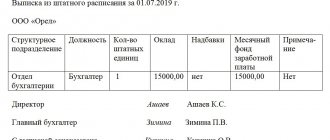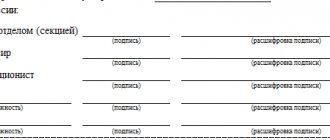Free legal consultation by phone:
8
Serious economic and financial decisions require compliance with a lengthy procedure for approval and discussion of the terms of the upcoming transaction.
At the same time, the will of the parties to conclude such a transaction must be formalized in some way. The agreement serves as the optimal format.
This document reflects the general essence of the intentions of the parties and the main vector of development of their relations.
Agreement of intent for cooperation
The Civil Code of the Russian Federation provides for an agreement of intent as a declarative statement. This does not mean that such a document has no actual meaning.
However, its form and meaning for legal entities is more declarative in nature.
The document signifies the readiness of the parties for mutual activities, the specific conditions of which are yet to be discussed.
The features and main characteristics of this concept include:
- The parties may be legal entities or individuals. In this case, individuals act exclusively as individual entrepreneurs. This is because the preliminary agreement is of a commercial nature. Its norms apply within the framework of entrepreneurial activity when it comes to cooperation;
- Despite the generally declarative form, the direction of cooperation should be indicated. That is, it should be clear from the text in what area the subjects plan to cooperate and what type of activity to engage in;
- It is necessary to determine the timing of the final formation of the basic conditions for joint work. There may be several stages of discussion of the final agreement. Each such stage involves approvals and additional discussions.
Thus, this document is a convenient form of presenting the preliminary positions of the parties and a statement of their plans.
The importance of these papers is also expressed by the fact that they can be published. Accordingly, the companies' plans will become known on the market, which will determine the attractiveness of their assets and securities.
Consequences of concluding a letter of intent
Current civil legislation includes several norms that are similar to a declaration of intent. This is a preliminary agreement and an unnamed agreement.
In the first case, the document contains clear language. The parties undertake to conclude a deal after a certain period of time or will conclude it upon reaching certain conditions.
When a document does not contain the obligations of the parties, there may not be any consequences.
In any case, the concept of consequences is closely related to the responsibility for refusing to formalize the final contract, so everything depends on the wording that will be included by the parties.
Notice of intention to terminate the contract
In cases where there are specific terms or conditions for concluding a transaction, it is necessary to send a notice to the party of refusal to conclude it.
In this case, the deadline for sending the notification must be contained in the preliminary document. Such responsibilities should be discouraged from participants at the very first stage of their interaction.
If the specified period is not defined, then one must proceed from a reasonable period, which can be set depending on the complexity of the planned transaction.
Sample letter of intent
Such an agreement can mean any work or services. This could be a contract, cooperation in the field of design development, joint development of subsoil, and so on.
A general correct example of this document can be found here:
Why are letters of intent drawn up?
Sometimes the parties to a transaction cannot agree on all the terms in a short time. They argue about the cost of an object or service, the duration of cooperation and other parameters of cooperation. In this case, it is appropriate to conclude an agreement of intent to conclude a transaction or a preliminary agreement . These documents will protect partners from refusal by the other party: the counterparty will be bound by obligations and will not be able to unilaterally refuse the main agreement.
The scope of application of preliminary agreements is very wide. This way, the parties can agree in advance on the supply of goods that are still at the production stage and fix their price. It is possible to agree in advance on certain conditions for the purchase and sale of real estate - terms, cost, transfer procedure.
Article 429 of the Civil Code of the Russian Federation is devoted to preliminary agreements From it you can find out that such an agreement is concluded in the same form as established for the main contract. In any case, the document must be drawn up in writing, otherwise it will have no force. The legislation does not oblige parties to transactions to sign any documents indicating their intention to cooperate. This is strictly voluntary. If the counterparties are ready to immediately conclude the main agreement, there are no obstacles to this.
The Civil Code requires participants to indicate the period within which they undertake to sign the main contract (Article 429, paragraph 4). This document can also provide for sanctions that are supposed to be applied to the party evading obligations. For example, payment of monetary compensation or compulsion to sign the main document. But in the case when both parties are voluntarily ready to abandon the transaction, all agreements on preliminary intentions lose force without negative consequences.
If the parties cannot immediately agree on all the terms of cooperation, they can enter into a preliminary agreement
Differences between the Agreement of Intent to enter into an agreement and the Preliminary Agreement
In speech, the concepts of “preliminary agreement” and “agreement of intent” are used as synonymous and equivalent. However, the second term is absent in modern Russian legislation. The legislation defines the requirements for preliminary agreements, but does not contain any information about letters of intent. However, in practice this form of document is still used. To better understand how these two options for formalizing agreements differ from each other, let’s present their features in the form of lists.
Preliminary agreement:
- is concluded when the parties want to guarantee a deal with each other, but are not ready to finally formulate all the terms of cooperation;
- must duplicate the structure of the main contract;
- directly indicates the subject of the transaction and the essential terms of cooperation;
- must contain the term for concluding the main agreement;
- if the conclusion period is not specified, the parties have a year to draw up the main document;
- for violation of obligations, both compulsion to conclude the main contract and monetary compensation may be provided.
Agreement of intent:
- a declarative document declaring that the parties intend to cooperate in the future;
- names the parties and their goals (but, as a rule, very formally - “with the aim of increasing competitiveness and productivity”);
- has no established structure and design requirements, is in free form;
- does not always specify the essential terms of cooperation;
- participants cannot be forced to perform;
- no compensation is provided;
- terminates upon conclusion of the contract, as well as upon termination of business relations.
Thus, if the parties intend to conclude a deal and are equally interested in it, it is recommended to sign a preliminary agreement. This document will have more serious legal force and will not allow counterparties to refuse obligations without consequences. If the parties are not sure that they will cooperate in the near future, but want to declare that they have common goals and plans, it is more logical to limit themselves to an agreement of intent. It does not threaten unpleasant consequences such as coercion or financial compensation.
Download a sample agreement of intent to conclude a contract: Agreement of intent
If one of the parties wants to withdraw from the letter of intent, a letter of intent to terminate the contract should be written. This document does not mean that the preliminary agreement automatically becomes invalid, but it can help the parties end the relationship without negative consequences. The letter should indicate the reasons why the counterparty is no longer interested in cooperation. For example, “a change in the direction of the organization” or “lack of financial opportunities at the current moment.”
Download a sample letter of intent to terminate the contract: Letter of termination of the contract
Article 429 of the Civil Code of the Russian Federation is devoted to preliminary agreements
Agreement of intent between individuals
Such subjects of legal relations also have the right to declare their goals and formalize it accordingly.
To do this, you do not need to follow a clear form. It is enough to state your positions in a clear and precise manner and reflect plans for further joint activities.
In this case, it is possible to indicate the specific functions of each person in future relationships.
Agreement of intent to purchase and sell a land plot
Persons who are parties to such a transaction have the right to conclude a document about their goals.
But, as stated above, if the agreement does not contain certain obligations, then the document cannot entail consequences if the party refuses to fulfill it.
But if there are obligations, then this will, in fact, be a deposit. After all, with the help of such an agreement it is possible to record the transfer of funds towards the future purchase of a plot.
How to draw up a letter of intent, sample
Drawing up an agreement of intent to enter into a main agreement is largely unregulated. In particular, as for most other agreements, there is no legally established mandatory form.
At the same time, a number of mandatory requirements apply to preliminary agreements - both those relating to the conclusion of agreements in general, and those specific exclusively to preliminary relations. In general, the letter of intent must contain the following points:
Setting data of the parties. These include the full name of individuals, or the name of a legal entity along with the surname and initials of the official signing it.- A brief description of the future agreement that will be concluded by the parties subsequently. At the same time, it must be clearly indicated what type of agreement there will be, regarding the nature of the transaction it will be concluded, as well as a number of other nuances. Unclear wording can lead to the recognition of the contract as void or to subsequent controversial situations.
- Time required for signing the main agreement. This clause is not mandatory - if the terms for concluding the main contract are not specified, they are considered to be no more than a year from the date of conclusion of the preliminary document.
- Responsibility of the parties and enforcement of the contract. The text of the agreement of intent may consider the conditions under which the parties risk being held liable to each other, the nature of such liability, and the obligation to pay penalties or compensation. In addition, the preliminary agreement may imply an advance payment or some other security.
- Signatures of the parties and seals, if the agreement is concluded with the participation of legal entities.
Important fact
Preliminary agreements must be concluded in the form in which the main agreement will be concluded. That is, if the preliminary agreement is drawn up in simple written form, then notarization of the main agreement will be considered unacceptable. Similar requirements apply in the reverse situation.






